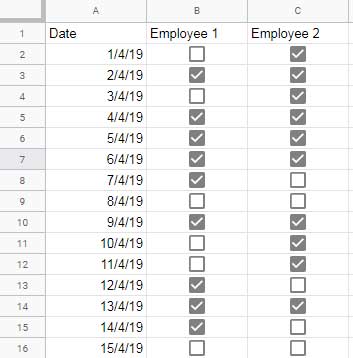


That array would produce output in four cells as such: Adam A simple example of an array contained in one cell would be =. You use curly brackets to enclose an array, commas to separate the date into columns, and semi-columns for rows. ArraysĪrrays are a group of values organized into rows and columns. Similar to boolean values, there are no formatting choices for errors. Common error types include divided by zero, shown as #DIV/0! and the value error, or #VALUE!. Errors are typically an unintended result of a calculation gone bad. Checked would be TRUE unchecked would be FALSE.ĭue to their simplicity, boolean value types have no formatting choices. A checkbox is another technique to represent the TRUE/ FALSE values.

There are only two possible values – TRUE or FALSE. Thirdly, boolean values are a simple data type as they are binary. Add 15 more hours and 15 minutes to get to 3:15 pm, and you arrive at 1,070,127:15:00! Boolean Values If you multiply the 44,586 by 24 hours in a day, you get to 1,070,065 hours. Counting forward in days from December 30, 1899, to January 27, 2022, gives you 44,586 days. Google Sheets starts counting days beginning on December 30, 1899.

The last formatting in the example above, Duration, creates the strange-looking number of 1,070,127:15:00. A spreadsheet indicates data types through the alignment of each cell’s contents. Default Alignmentīefore we dive into the different types, let’s talk about some clues you can pick up from an unformatted spreadsheet. If you are unsure what kind of data you have, you can always use this function to find out. It is a boolean value.Īs we go through these examples, remember that you can use the TYPE function to determine the value type. If the result meets the condition, it returns a TRUE. Aren’t I just adding numbers and everything works out fine? As you use spreadsheets more, you will use inputs and outputs for formulas that are more than just numbers. 2 The Six Data Types and Their FormattingĪt first, you may wonder why data types matter.0.1 The Implication of Different Data Types.


 0 kommentar(er)
0 kommentar(er)
